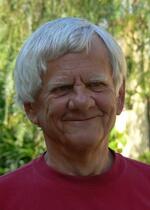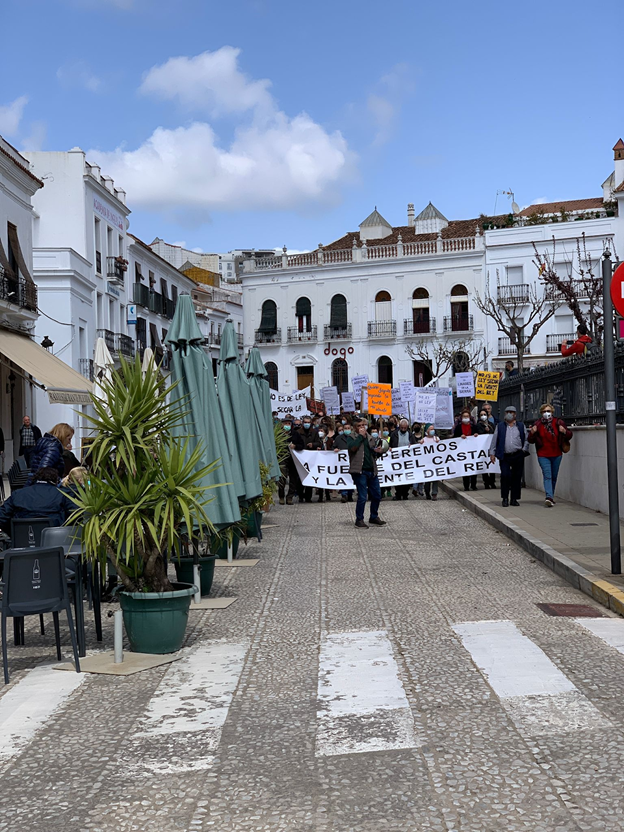In Memoriam: Veit Koester
The following tribute to the life of Veit Koester was prepared by WCEL Chair Emeritus, Professor Nicholas A. Robinson on 15 November 2021.

Photo: Pixabay
 Photo: Veit Koester
Photo: Veit Koester
In the early years of the young environmental law commission of the International Union for the Conservation of Nature, Veit Koester’s quiet leadership provided a pillar of strength. He researched and wrote IUCN’s study in 1980 on Nordic Countries Legislation on the Environment (IUCN’s Environmental Policy & Law Paper 14, 1980). He became a close collaborator with IUCN’s Environmental law Center in Bonn, with its Head, Dr. Françoise Burhenne-Guilmin, and the Chair of IUCN’s Law Commission, Dr. Wolfgang E. Burhenne. From his base as Head of the Ecology Division of the Danish National Forest and Nature Agency, Veit Koester partnered with IUCN’s Environmental Law Programme.
When Germany launched the call to negotiate what became the Bonn Convention on Migratory Species, in 1979 Koester was tapped to serve as Vice Chair of the committee of States that negotiated the terms of the agreement. He recalled how this launched his work in multilateral environmental diplomacy. “Wolfgang persuaded me to be elected as vice-chair. Until then I had never chaired global international negotiations, but only negotiations in the framework of the Council of Europe, but I accepted, assured that I would never be called upon to chair.” When the chair, Brazilian Ambassador Rubens Barbosa, was called way, Koester recalled that “suddenly I was in charge.” Despite his self-deprecating and quiet manner, Veit of course knew he might have to take the chair, but part of his effectiveness was in letting others also be out front, fostering a teamwork approach. As he observed, “The event was quite important or me because it started my career as chair of international governmental conferences.” (quote from Barbara Lausche, Weaving a Web of Environmental Law, 2008, p. 172 ( https://www.cipra.org/en/publications/3396 ).
Veit Koester again emerged as a key participant in IUCN’s environmental law capacity building initiatives on wetlands and wild birds. In the successful effort to strengthen the Ramsar Convention on Wetlands of International Importance, Veit Koester chaired the diplomatic Extraordinary Conference of 1987 that IUCN was instrumental in organizing, which amended Ramsar to enable its State Members to expand Ramsar’s application. His Legal Analysis of the Ramsar Convention and its Implementation in Denmark (1989) was published and remained in print for four editions. He was involved in many further multilateral negotiations, to Denmark’s credit, and was called upon to Head the Sector of Multilateral Cooperation in the International Division of Denmark’s National Forest and Nature Agency.
As IUCN’s Environmental law Programme launched the conceptual law development project to create an international biodiversity agreement, Veit Koester was perhaps to make his greatest single contribution to environmental law. We had many debates within the IUCN’s Commission’s Steering Committee and ELC Secretariat about the text of the possible Convention on Biodiversity. Never far from his briar pipe, in days when tobacco was still common in meetings, Veit would take in the debates and at an opportune moment, engage in the discussions. He loved his pipes long after they no longer held tobacco.
The environmental law team at IUCN had crafted elements for a biodiversity treaty on the foundations of the World Charter for Nature (1982). Wolfgang Burhenne, Sir Martin Holdgate (IUCN’s former Director General), Veit Koester and others among IUCN’s leaders, won the support of the UN Environment Programme Governing Council at its 14th Meeting in 1987, for developing an umbrella convention on conservation of biological diversity. At the 1988 IUCN’s 17th General Assembly in Costa Rica, the Environment Law Commission and Bonn Center launched their draft text. Although the text was met with skepticism and worries (many doubted that it could succeed), the IUCN Assembly did endorse the IUCN Environmental Law Programme’s further steps. In order to implement the UNEP Governing Council’s decision, a technical working group was established, chaired by none other than Veit Koester. The working group took the IUCN draft as a working text for the negotiations. IUCN, represented by Françoise Burhenne-Guilmin, together with FAO and UNESCO, participated to provide their expertise. From 1990 to 1992, with Koester’s leadership, a UN Intergovernmental Negotiating Committee refined the terms of the new Convention, which in June of 1992 was duly submitted for States to sign at the “Earth Summit” (UN Conference on Sustainable Development, UNCED) meeting in Rio de Janeiro. Veit Koester would write several articles and provide commentaries about the negotiations and text of the Convention on Biological Diversity (CBD), for example for the journal of the International Council of Environmental law (ICEL): “The Biodiversity Convention Negotiating Process and Some Comments on the Outcome,” 27(3) Environmental Policy & Law 176, pp. 175-92 (1997).
Veit Koester was named in 2003 to chair the Compliance Committee of the Aarhus Convention on Access to Information, Participation in Decision-making, and Access to Justice. He chaired the working group that negotiated the Cartagena Protocol on Biosafety for the CBD, and chaired its Compliance Committee until 2009, and authored a definitive study on the Protocol. He represented the EU Presidency at many conferences of the parties and intergovernmental negotiating conferences. For his accomplishments, Veit Koester received the Elisabeth Haub Award for Environmental Diplomacy (2000), the UNEP Global 500 Award (1996), the CITES Golden Pin (2002) and the Environmental Law Prize of the Danish Society for Environmental law (2010). A master of Law and Administration, he lectured as an External Professor at Roskilde University Centre in Denmark and was a guest lecturer in international environmental Law at the Faculty of Law for the University of Copenhagen. His six books on environmental law in Danish were published in many editions. In addition to being a member of IUCN’s Environmental Law Commission, he was active as a member of the International Council of Environmental Law (ICEL) and the European Council of Environmental law.
Veit Koester was generous with his time and expertise. IUCN’s World Commission on Environmental Law was an essential part of his career, and in turn his service to IUCN has helped to endow the Commission the success it enjoys today. The entire global community of environmental law mourns Veit’s death and shares condolences with all in Denmark who mark his passing. We all have lost a friend and shall miss him.
Nicholas A. Robinson, Executive Governor, International Council of Environmental Law (ICEL)



